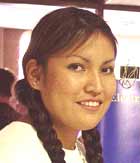Contents: 2024 | 2023 | 2022 | 2021 | 2020 | 2019 | 2018 | 2017 | 2016 | 2015 | 2014 | 2013 | 2012 | 2011 | 2010 | 2009 | 2008 | 2007 | 2006 | 2005 | 2004 | 2003 | 2002 | 2001
2004, 20
An electronic acoustic recorder for quantifying total signaling time, duration, rate and magnitude in acoustically signaling insects
language: English
received 05.11.2004, published 03.12.2004
Download article (PDF, 230 kb, ZIP), use browser command "Save Target As..."
To read this document you need Adobe Acrobat © Reader software, which is simple to use and available at no cost. Use version 4.0 or higher. You can download software from Adobe site (http://www.adobe.com/).
ABSTRACT
Recent mate choice investigations reveal that females often prefer to mate with males that produce acoustic loud, long, and/or leading acoustic signals. However, only a limited number of studies have examined within population variation in these temporal components. Even fewer studies have estimated their heritabilities. Work has been hindered by the time and personnel required to quantify the variation. A design for building an efficient and inexpensive electronic acoustic recorder (EAR), that enables hypothesis testing of temporal signaling behavior in most acoustically signaling insects, is described. The EAR is attached to a personal computer and samples the acoustic environment of up to 128 individuals, 10 times per second, for unlimited time periods. It compares microphone sound pressure level to a pre-set level and stores signaling/non-signaling data on the computer’s hard drive. The EAR monitors when individuals signal temporally, how much time they spend signaling, how loud they signal, duration of signaling bouts, duration of breaks, and when they produce their signaling bouts in relation to their neighbors. The capabilities of the recorder are illustrated with the Texas field cricket, Gryllus texensis.
15 pages, 5 figures
APPENDIXES
APPENDIX I. Data Acquisition Software (PDF, 35 kb, ZIP)
APPENDIX II. Summary Software (PDF, 25 kb, ZIP)
Сitation: Susan M. Bertram, Luke A. Johnson, Jerome Clark, Carmenlita Chief. An electronic acoustic recorder for quantifying total signaling time, duration, rate and magnitude in acoustically signaling insects. Electronic Journal “Technical Acoustics”, http://www.ejta.org, 2004, 20.
REFERENCES
1. Dyson M., Henzi S., Passmore N. The effect of changes in relative timing of signals during female phonotaxis in the reed frog, Hyperolius marmoratus. Animal Behaviour, 1994, 48(3), 679–685.
2. Schwartz J. J. Male calling behavior, female discrimination and acoustic interference in the neotropical treefrog Hyla microcephala under realistic acoustic conditions. Behavioral Ecology and Sociobiology, 1993, 32(6), 401–414.
3. Galliart P. L., Shaw K. C. The effect of variation in parameters of the male calling song of the katydid, Amblycorypha parvipennis (Orthoptera: Tettigonnidae) on female phonotaxis and phonoresponse. Journal of Insect Behavior, 1996, 9(6), 841–855.
4. Snedden W. A., Greenfield M. D. Females prefer leading males: relative call timing and sexual selection in katydid choruses. Animal Behaviour, 1998, 56, 1091–1098.
5. Greenfield M. D., Rand A. S. Frogs have rules: Selective attention algorithms regulate chorusing in Physalaemus pustulosus (Leptodactylidae). Ethology, 2000, 106(4), 331–347.
6. Tarano Z., Herrera E. A. Female preferences for call traits and male mating success in the neotropical frog Physalaemus enesefae. Ethology, 2003, 109(2), 121–134.
7. Murphy C. G. Chorus tenure of male barking treefrogs, Hyla gratiosa. Animal Behaviour, 1994, 48(4), 763–777.
8. Bertram S. M., Berrill M., Nol E. Male mating success and variation in chorus attendance within and among breeding seasons in the gray treefrog (Hyla versicolor). Copeia, 1996(3), 729–734.
9. Morrison C., Hero J. M., Smith W. P. Mate selection in Litoria chloris and Litoria xanthomera: females prefer smaller males. Austral Ecology, 2001, 26(3), 223–232.
10. Given M. Interrelationships among calling effort, growth rate, and chorus tenure in Bufo fowleri. Copeia, 2002, 2002(4), 979–987.
11. Klappert K., Reinhold K. Acoustic preference functions and sexual selection on the male calling song in the grasshopper Chorthippus biguttulus. Animal Behaviour, 2003, 65, 225–233.
12. Castellana S., et al. Call intensity and female preferences in the European green toad. Ethology, 2000, 106(12), 1129–1141.
13. Cade W. H., Cade E. S. Male mating success, calling and searching behavior at high and low-densities in the field cricket, Gryllus integer. Animal Behaviour, 1992, 43(1), 49–56.
14. Crnokrak P., Roff D. A. The genetic basis of the trade-off between calling and wing morph in males of the cricket Gryllus firmus. Evolution, 1998, 52(4), 1111–1118.
15. Prohl H. Variation in male calling behavior and relation to male mating success in the strawberry poison frog (Dendrobates pumilio). Ethology, 2003, 109(4), 273–290.
16. Hedrick A. Female preference for male calling bout duration in a field cricket. Behavioral Ecology and Sociobiology, 1986, 19, 73–77.
17. Allen G. R. Diel calling activity and field survival of the bushcricket, Sciarasaga quadrata (Orthoptera: Tettigoniidae): A role for sound-locating parasitic flies? Ethology, 1998, 104(8), 645–660.
18. Kolluru G. R. Variation and repeatability of calling behavior in crickets subject to a phonotactic parasitoid fly. Journal of Insect Behavior, 1999, 12(5), 611–626.
19. Bertram S. M. Temporally fluctuating selection of sex-limited signaling traits in the Texas field cricket, Gryllus texensis. Evolution, 2002, 56(9), 1831–1839.
20. Webb K. L., Roff D. A. The quantitative genetics of sound production in Gryllus firmus. Animal Behaviour, 1992, 44(5), 823–832.
21. Hedrick A. Female choice and the heritability of attractive male traits: an empirical study. American Naturalist, 1988, 132, 267–276.
22. Bertram S. M., Johnson L. An electronic technique for monitoring the temporal aspects of acoustic signals of captive organisms. BioAcoustics, 1998, 9, 107–118.
23. Kidder G. W., Sakaluk S. K. Simple and inexpensive electronic device for automatic recording and analysis of insect acoustical activity. Florida Entomologist, 1989, 72(4), 642–649.
24. Hedrick A. V., Mulloney B. A multichannel electronic monitor of acoustic behaviors, and software to parse individual chanels. Journal of Neuroscience Methods, 2004, 133, 201–210.
 |
Susan Bertram is currently an Assistant Research Professor at Arizona State University. She received her BSc and MSc from Trent University in Peterborough, Ontario, Canada, and her PhD from Arizona State University. Her research investigates how variation is maintained in sexually selected traits e-mail: sbertram(at)asu.edu |
|
 |
Luke Johnson is currently a senior staff circuit designer with the Intel Corporation in Phoenix, Arizona. He received his Bachelor of Science in Electrical Engineering from Georgia Institute of Technology. He is currently enrolled in a PhD program at Stanford University |
|
 |
Jerome Clark is currently an undergraduate student at Arizona State University. He will receive his BS in Conservation Biology and American Indian Studies in May 2005. He has conducted undergraduate research with the support of Arizona State University, a National Science Foundation funded traineeship through the Undergraduate Mentoring in Environmental Biology program, and a National Institutes of Health funded traineeship through the Minority Access to Research Careers Program |
|
 |
Carmenlita Chief is currently an undergraduate student at Arizona State University. She will receive her bachelors in Conservation Biology in December 2005. She has conducted undergraduate research with the support of a National Science Foundation funded traineeship through the Undergraduate Mentoring in Environmental Biology program |
|
